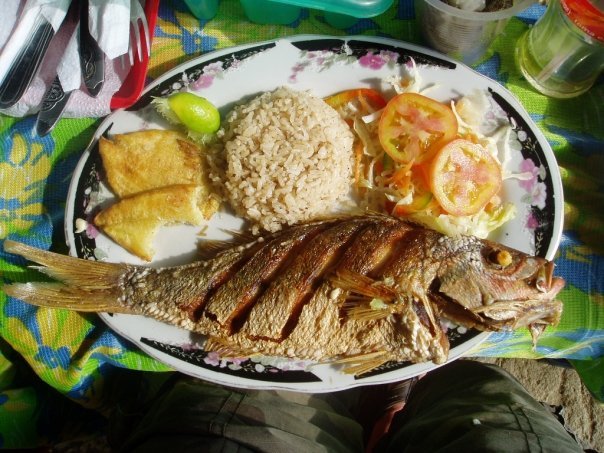National Dishes
Colombian food is characterized by its blending of European cuisine with aspects of indigenous cuisine.
Even though there is no consensus as to which one dish can be considered the true “national dish,” the arepa and sancocho can be considered excellent candidates. Other well-known regional dishes include the bandeja paisa (pictured below), ajiaco, the lechona Tolimense, the mote de queso, and cuchuco.
Fritanga is a set of dishes that can be likened to barbecue. It is enjoyed throughout the entire country. Fritanga usually includes grilled beef and chicken, ribs, and sausage such as morcilla, chorizo, longaniza, and chunchullo (fried cow intestines) accompanied by mini potatoes and arepas made of choclo (sweet corn).
Staples of the Colombian diet include tubers such as potatoes and cassava, along with meat such as beef, chicken, pork, or fish. Grains such as corn and rice are widely consumed. The plantain is an important element of the Colombian diet, as are vegetables such as onion, garlic, pepper, and tomato. Legumes such as beans, peas, and lentils are eaten very frequently.
A myriad of fruit species grow in Colombia, and many fruits considered “exotic” commonly grow in Colombian forests and in the countryside. The climate and geography favor a great variety of crops, as well as a great variety of both freshwater and saltwater fish.

Regional Cuisine
In Bogotá and the Andean region, ajiaco is a traditional dish. It is a soup made of chicken, corn, potatoes, avocado, and guascas, a local herb. Traditionally, cream and capers are added at the table before eating. Ajiaco is served with white rice, salad with a hint of lemon, avocado, or sweet or salty tostadas. For breakfast, people in Bogotá often eat changua, a milk, scallion and egg soup.
Along the Caribbean coast, fish and lobster are used in mild spicy food. Coconut rice is a common dish along the coastal cities. Suero, which is a cross between yogurt and sour cream, is widely consumed, and was introduced by Arab immigrants in Baranquilla and other coastal cities. The arepa has many forms in the Caribbean region, which include arepa limpia, arepe’huevo (arepa with egg), and arepae’queso (arepa with cheese). In the Llanos of the east, barbecued meat is common, due to the cowboy-like culture. Dishes such as the ternera llanera are cooked on a vertical spit over an open fire. Freshwater fish such as the amarillo are also eaten.
In the Amazon, Brazilian and Peruvian influences can be seen in the local food. Local resources such as beef and other livestock, as well as freshwater fish, are typical ingredients in Amazonian cuisine.
The Tolimenses are considered a delicacy in the Tolima region. These tamales are made of corn dough, and are filled with a mixture of peas, carrots, potatoes, rice, chicken, pork, and various spices. They are wrapped in plantain leaves and boiled for three to four hours. Lechona is a whole roast pig stuffed with rice, vegetables, and pork, and is typically eaten on Sundays. This dish is now enjoyed throughout the country.
For more information on Colombian food, go here to Recipes Wiki.





